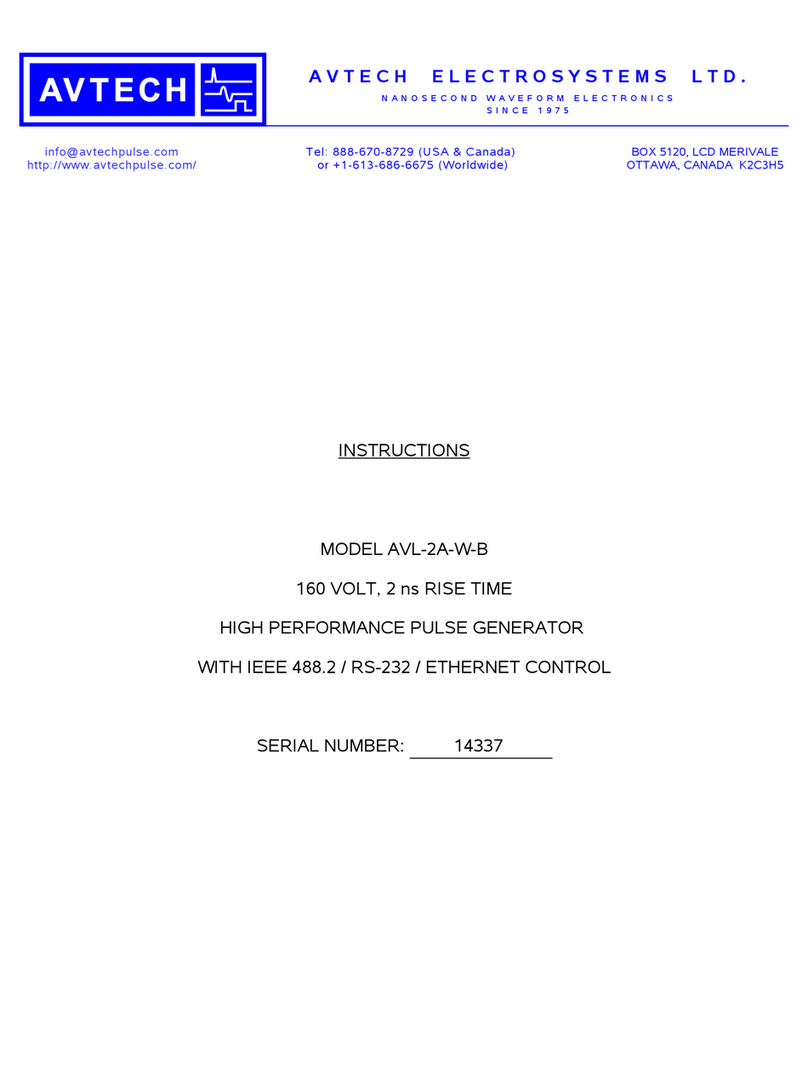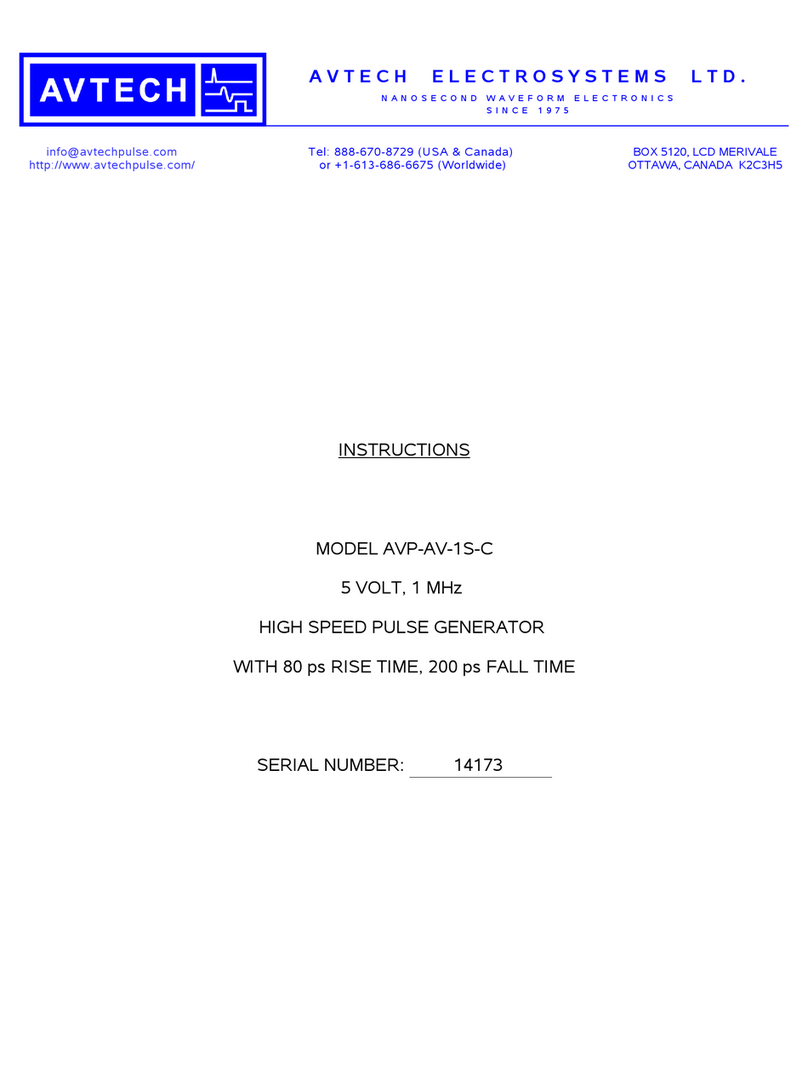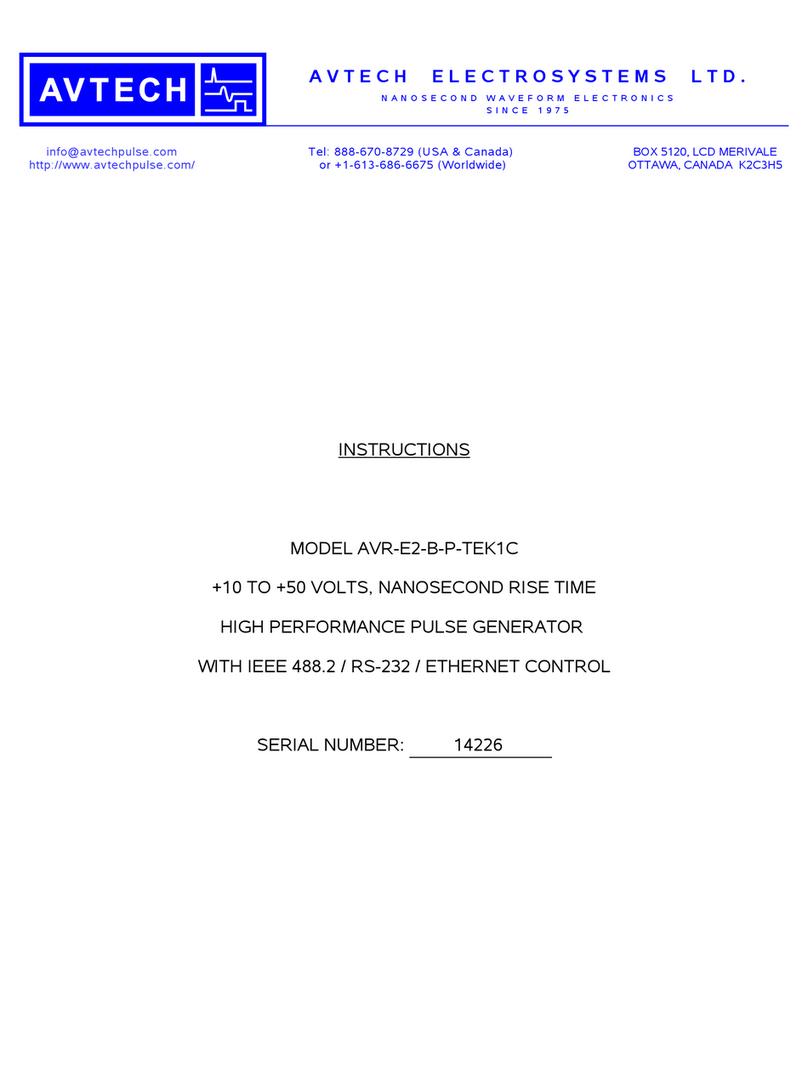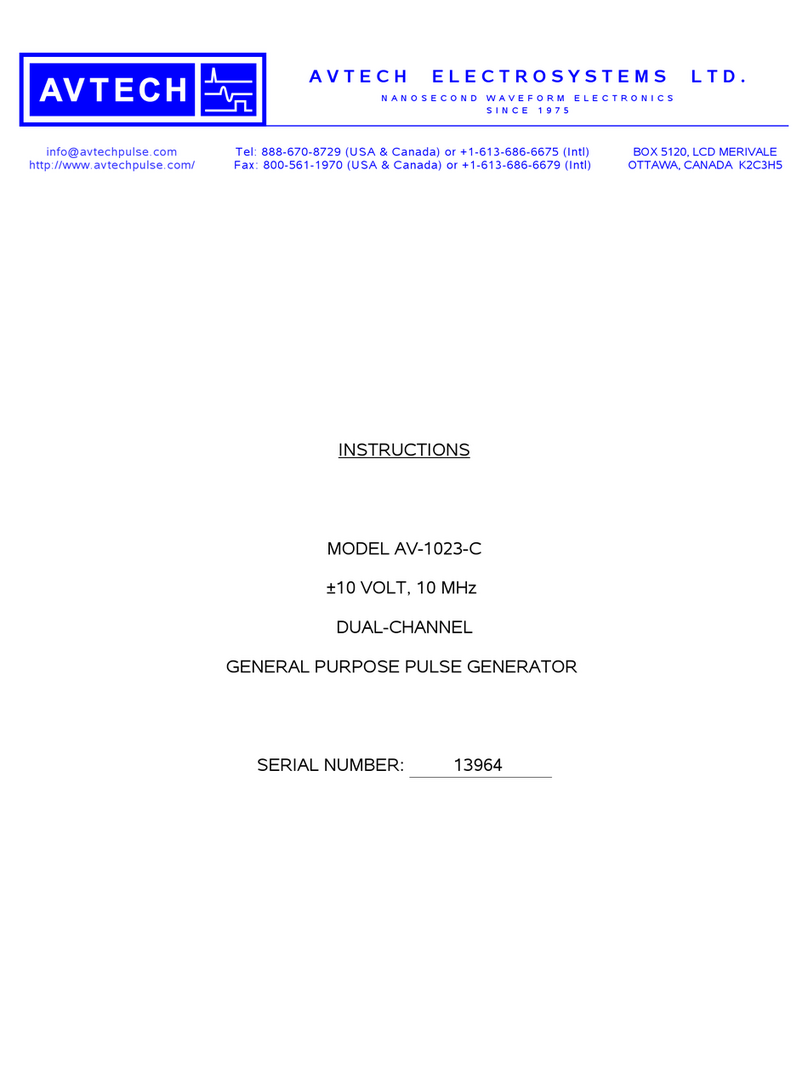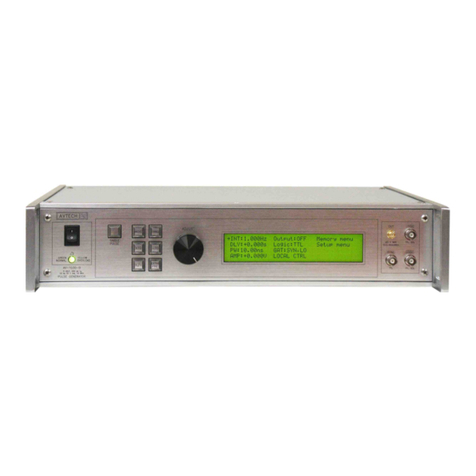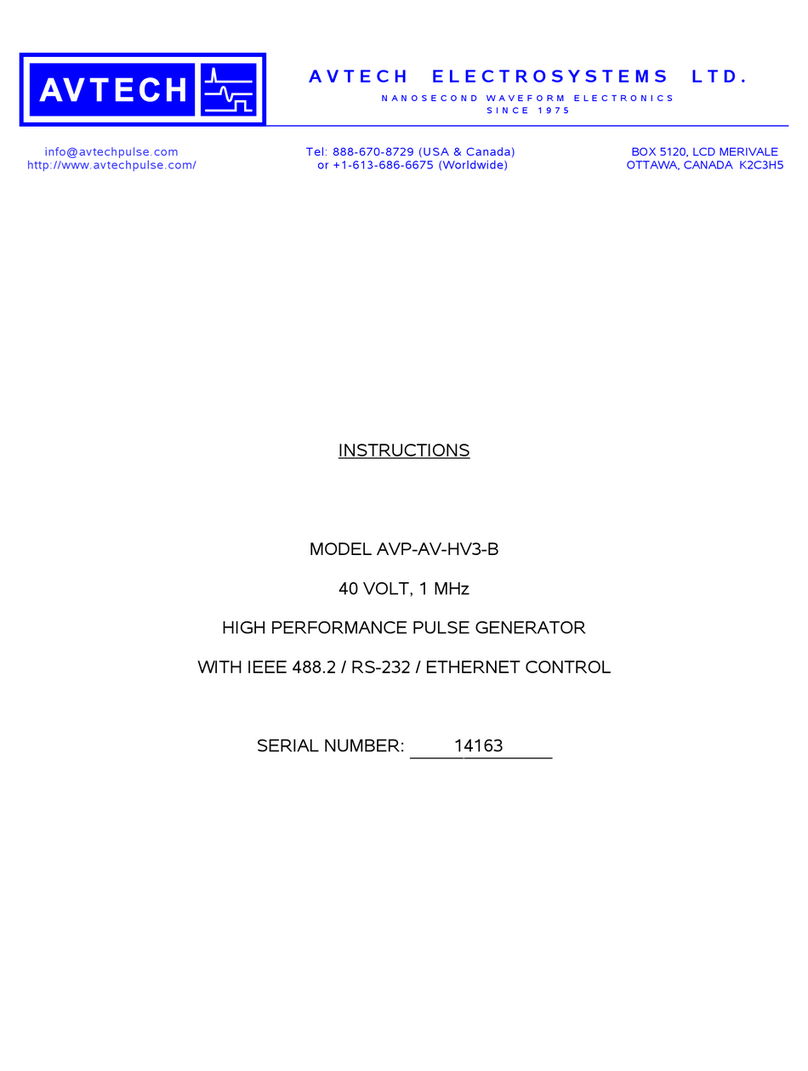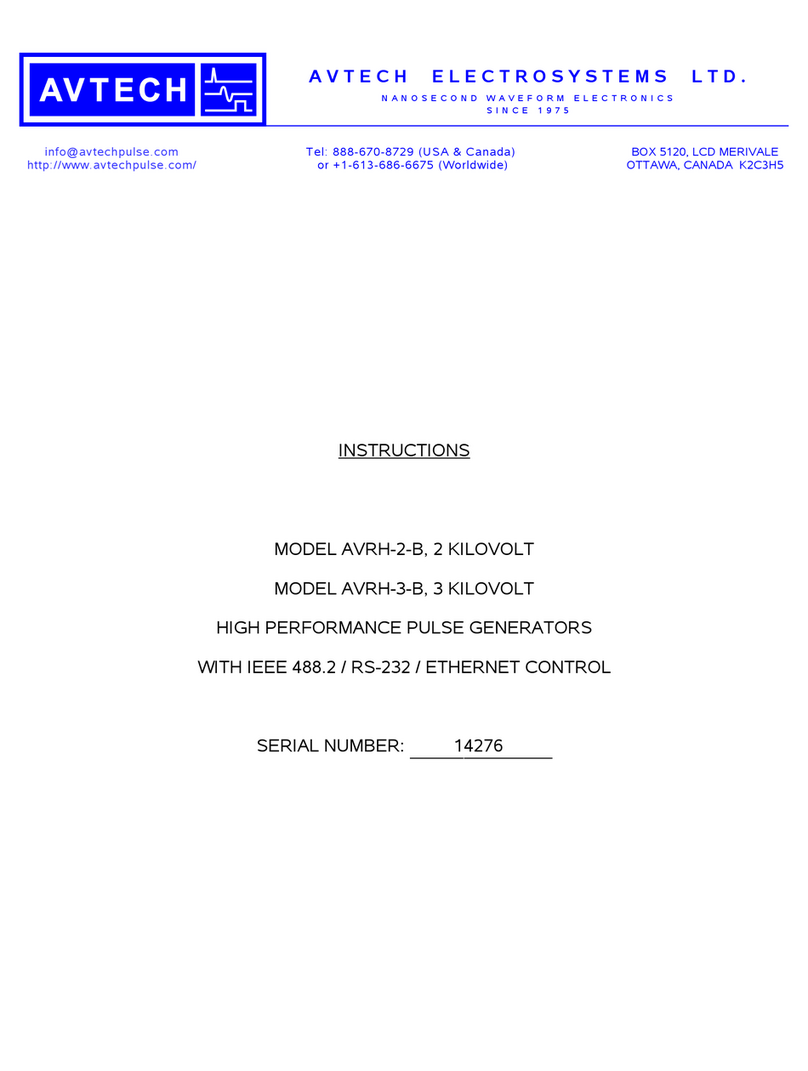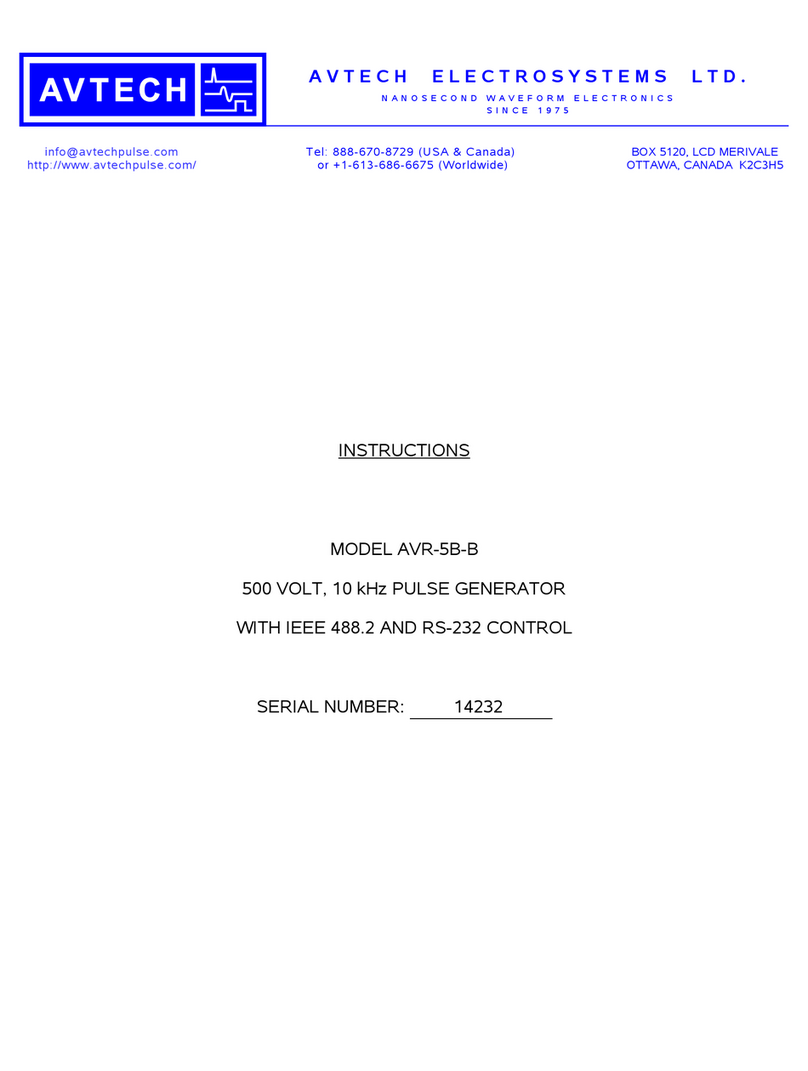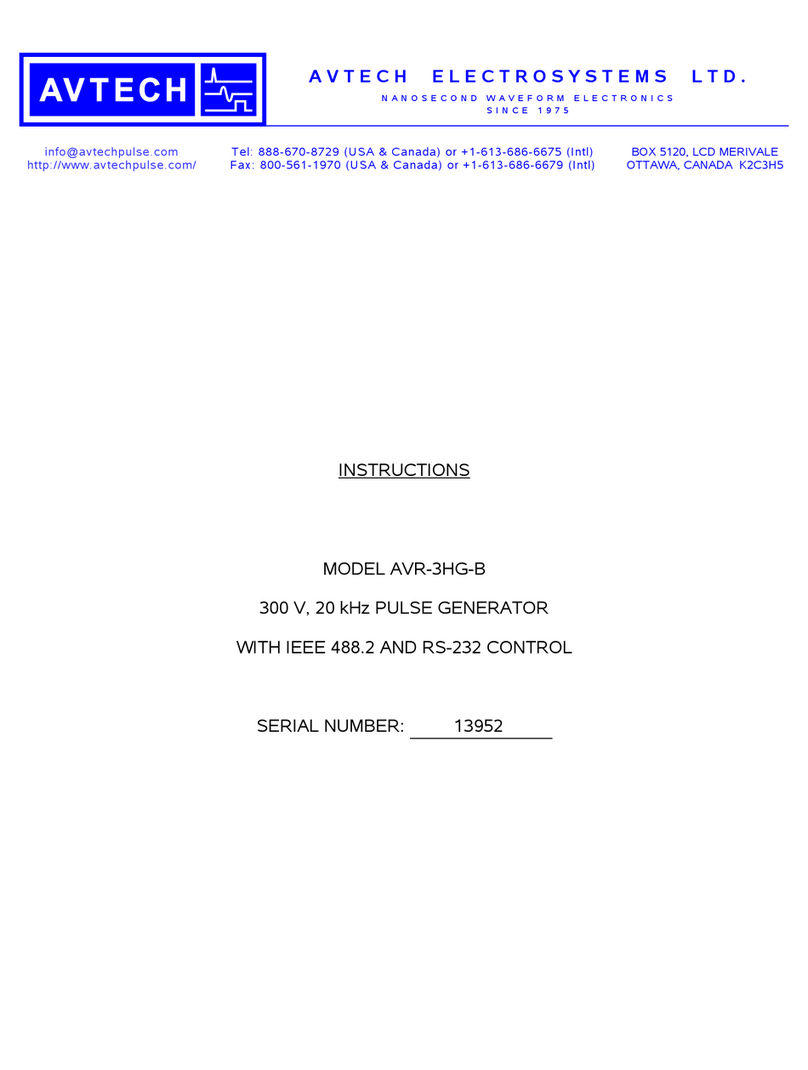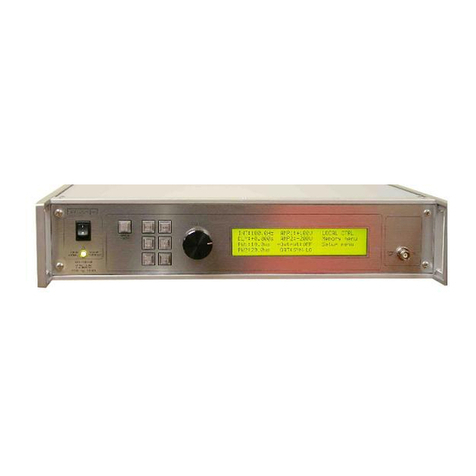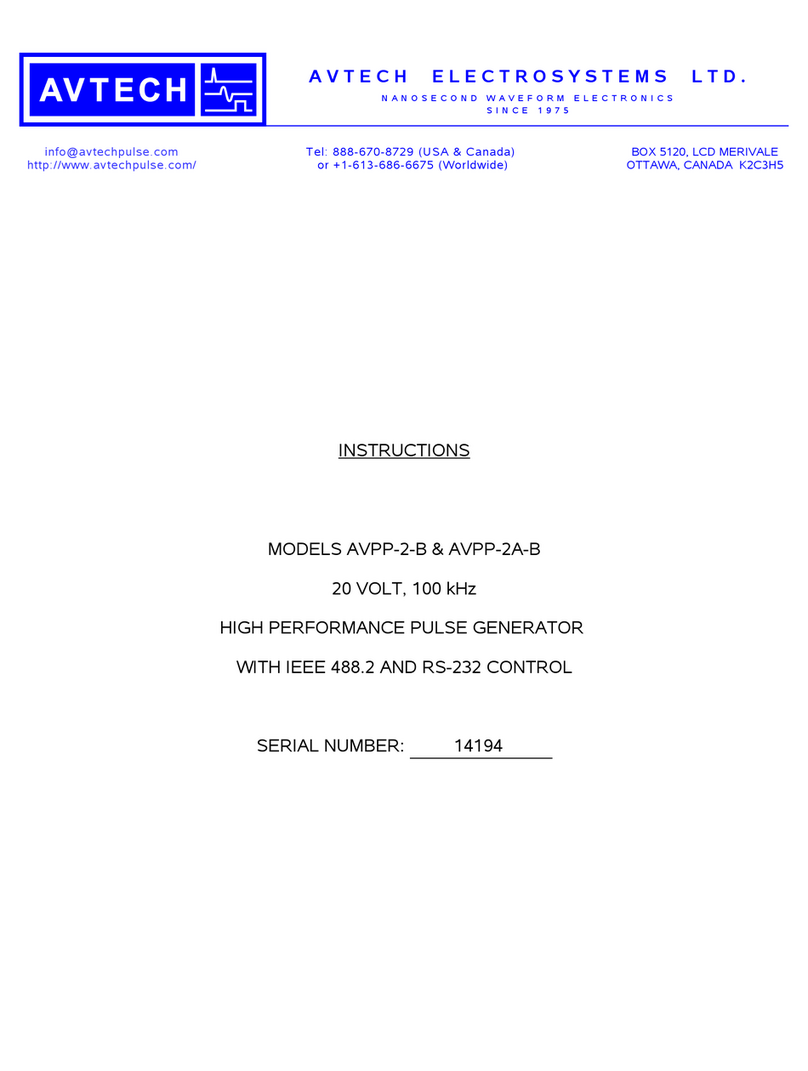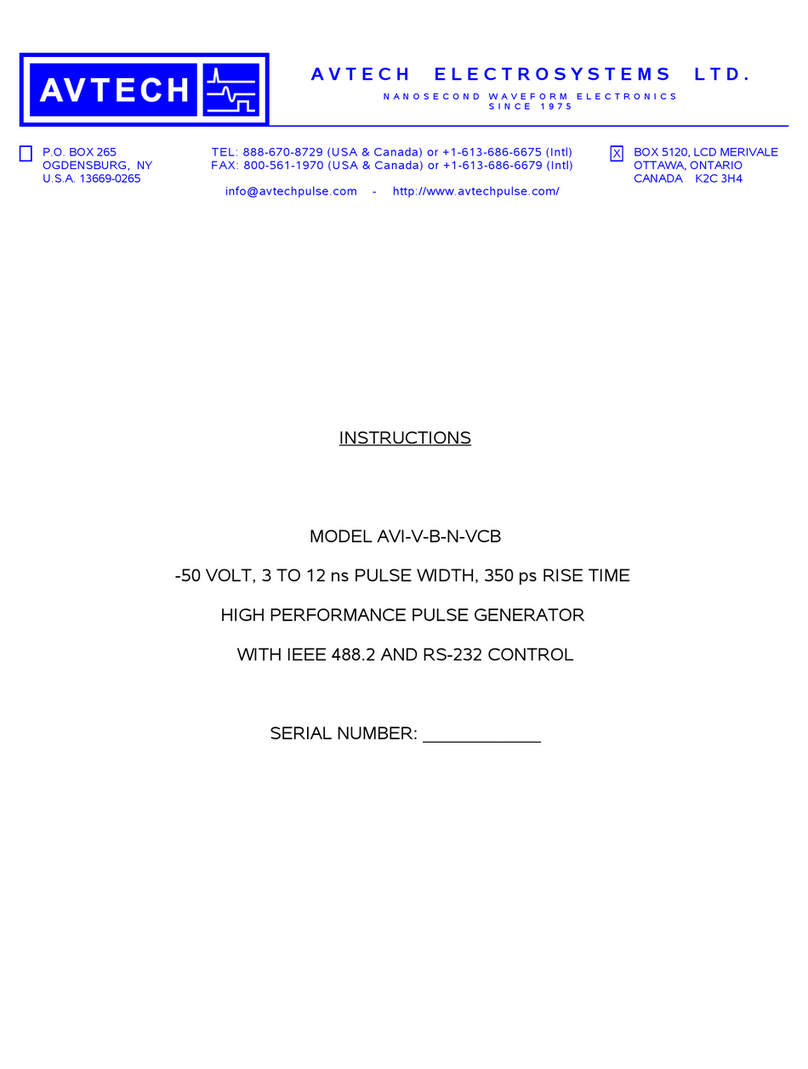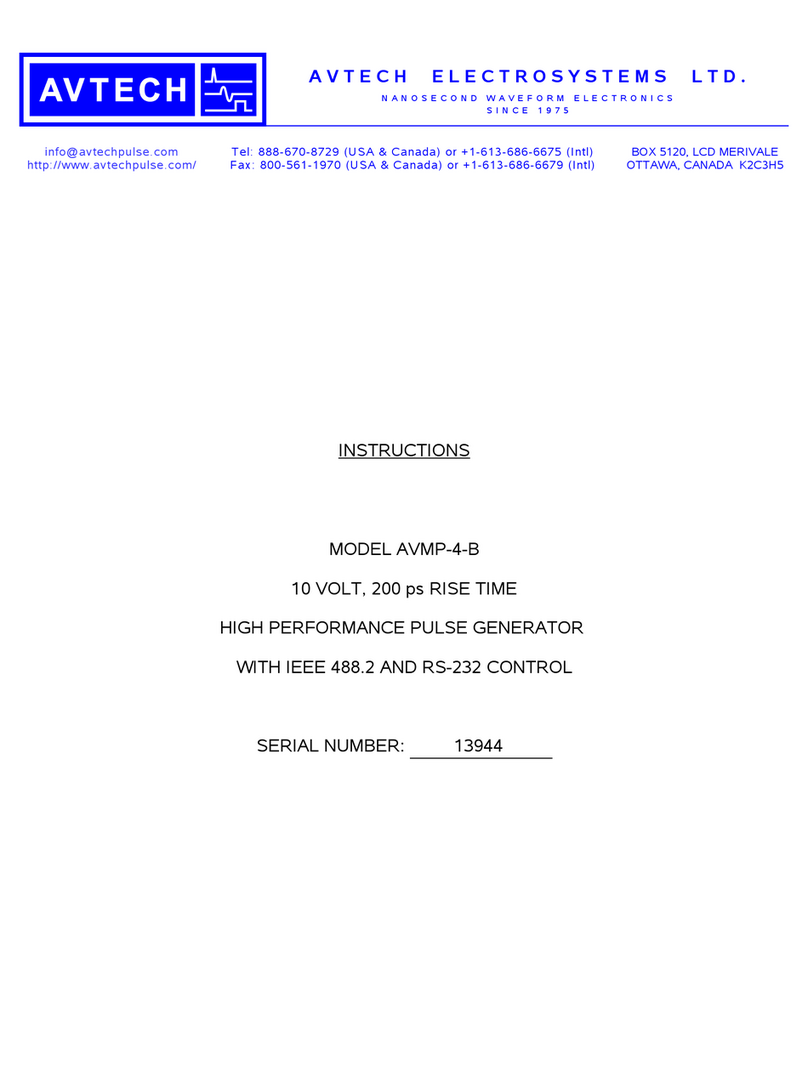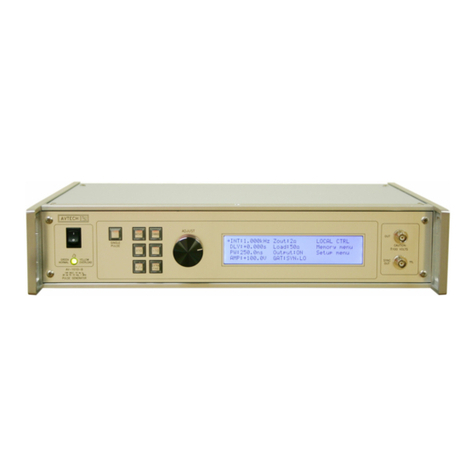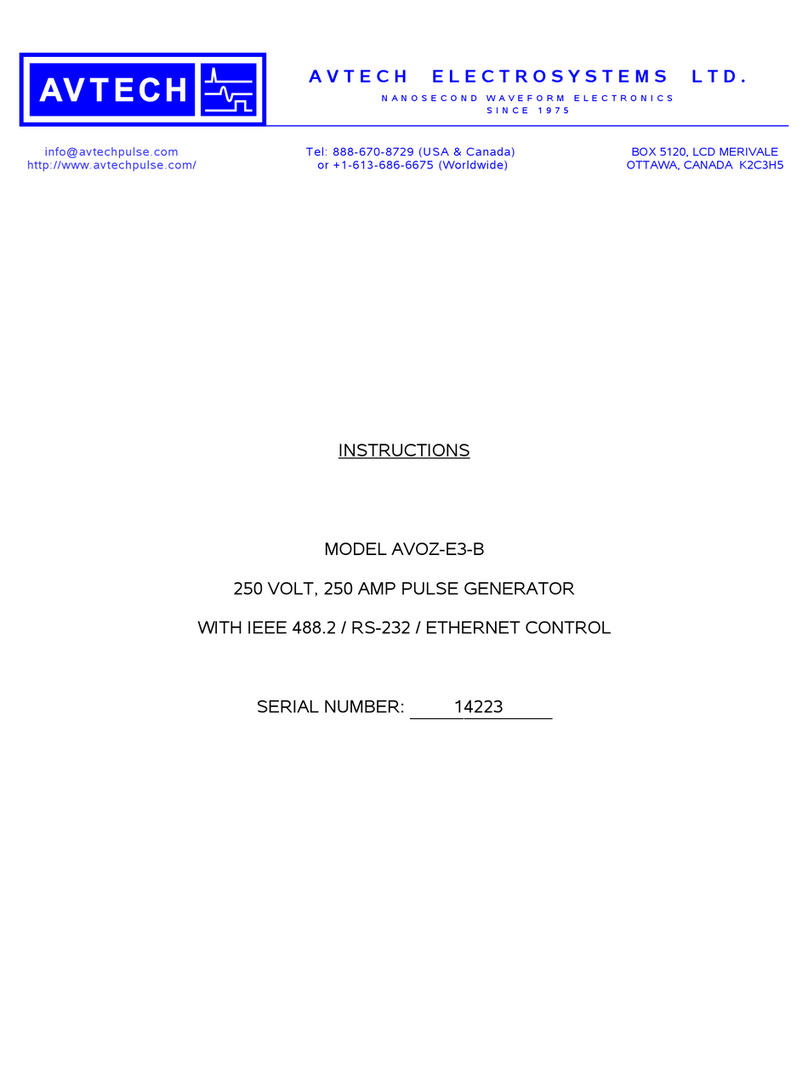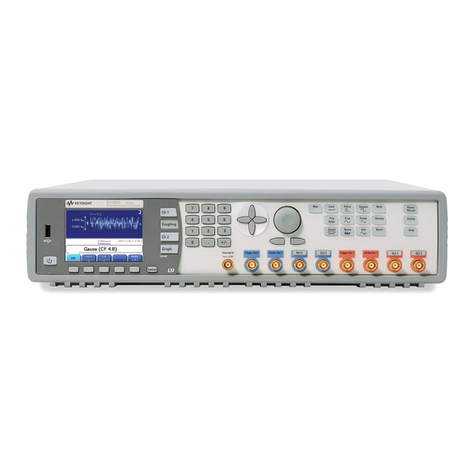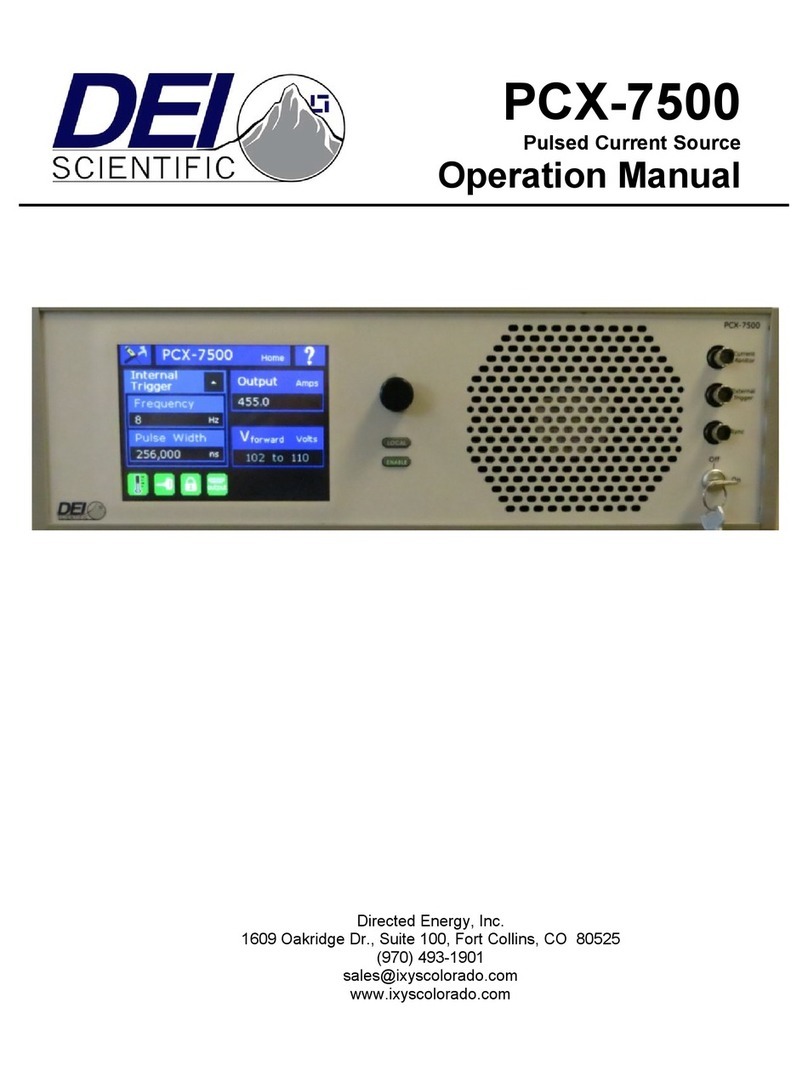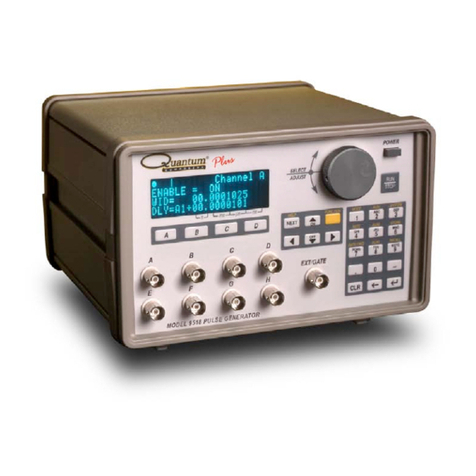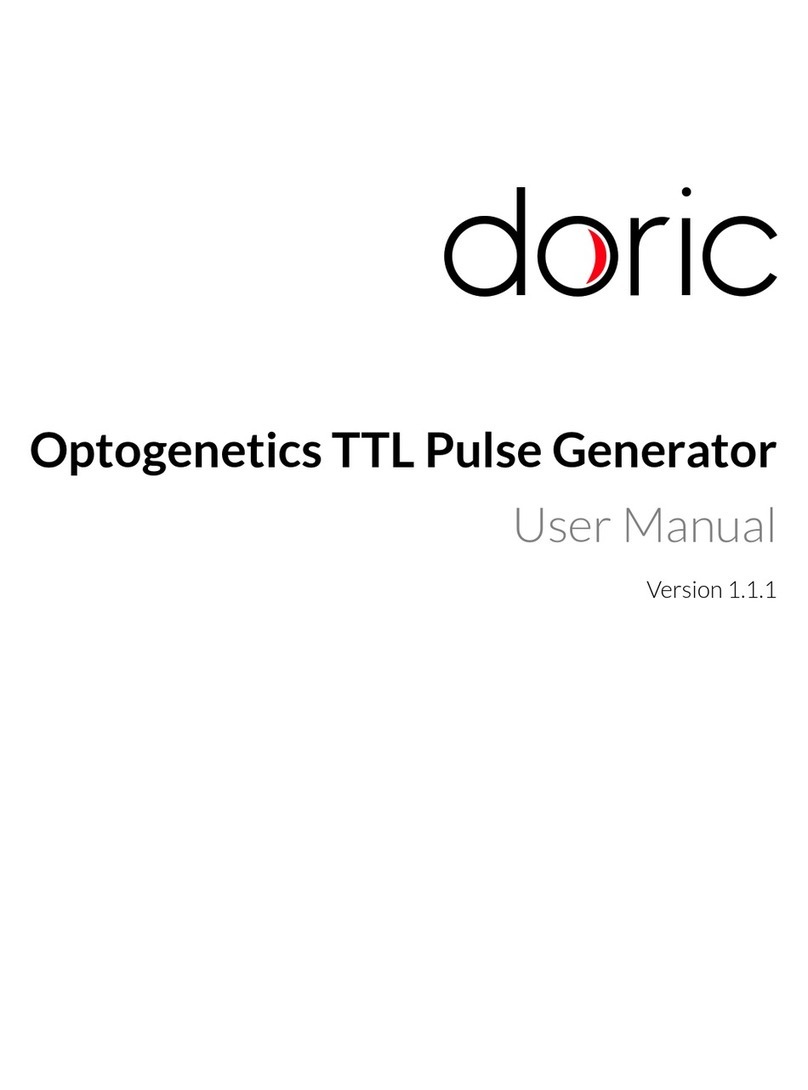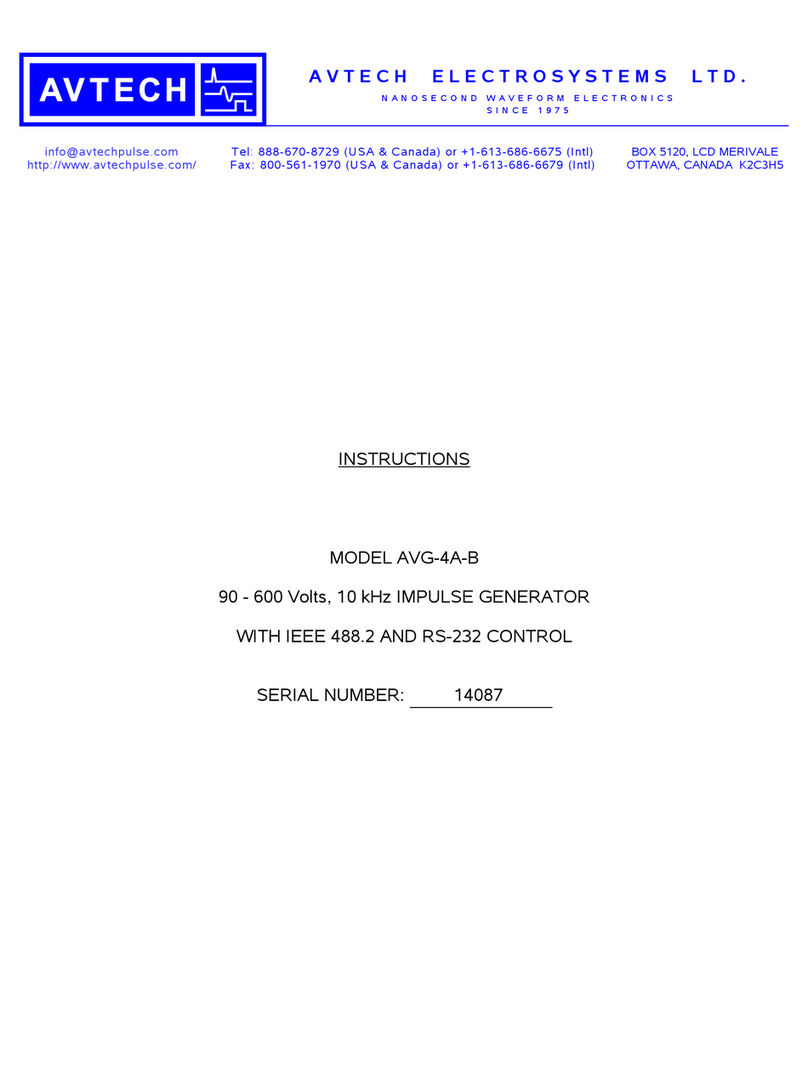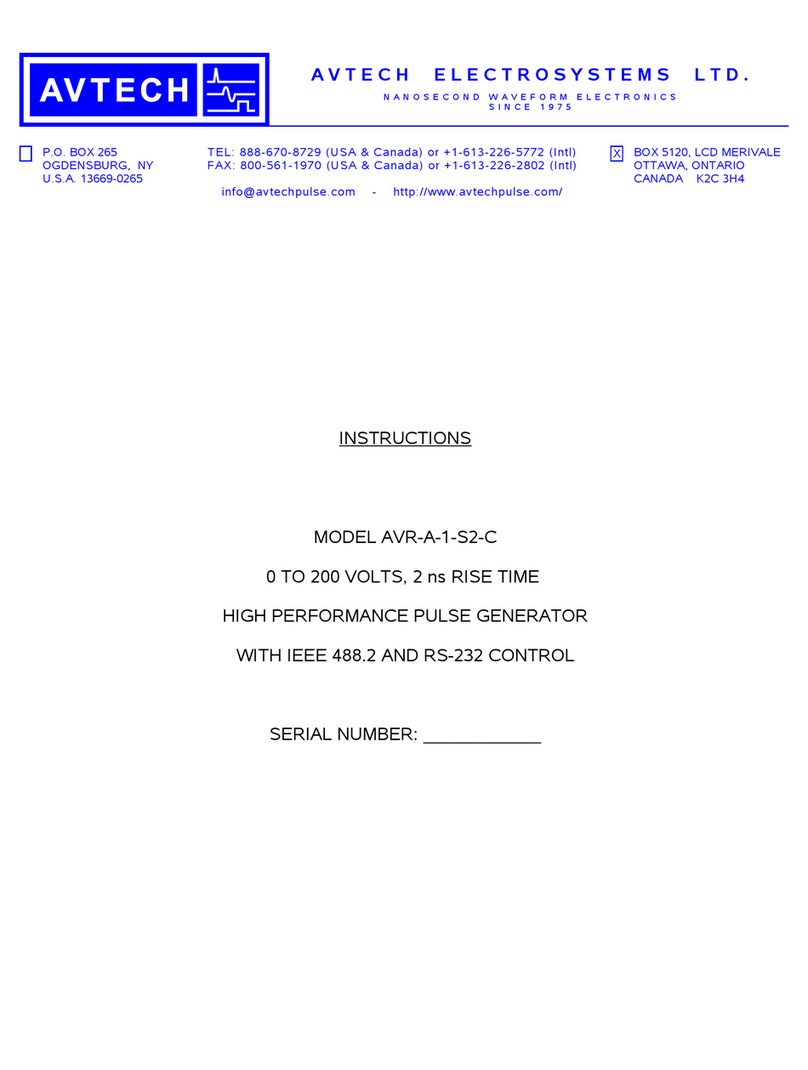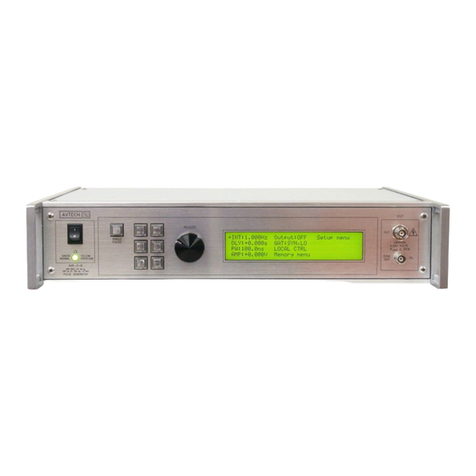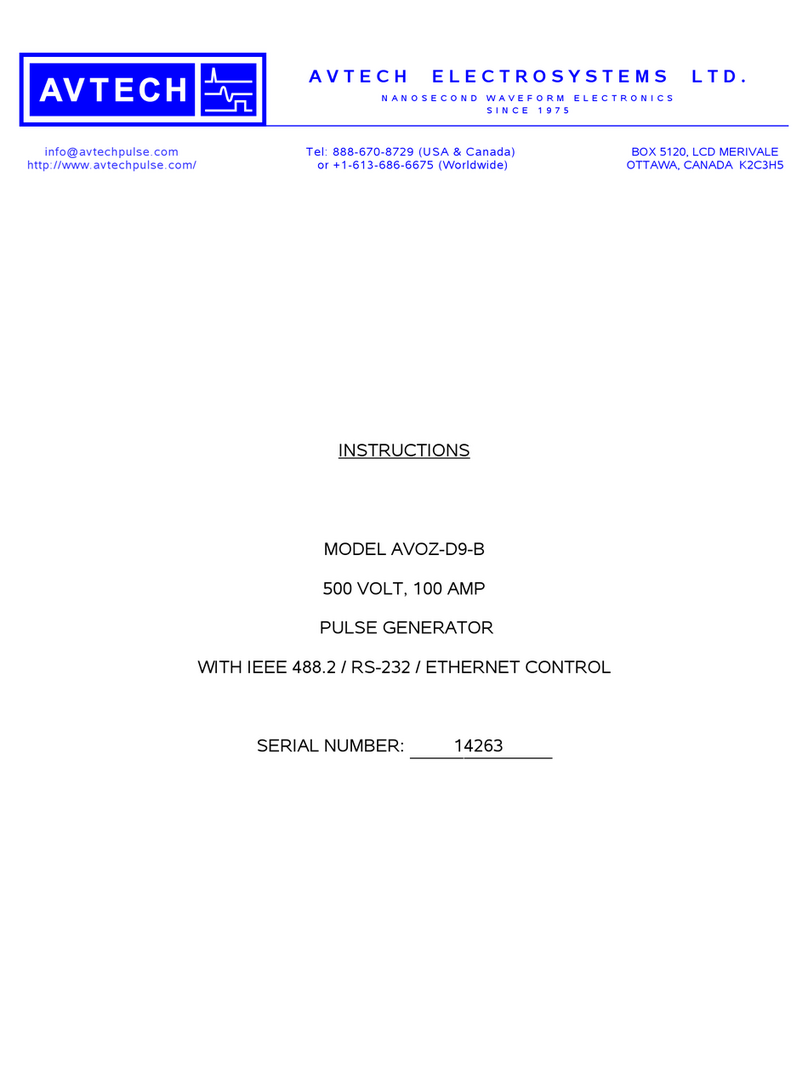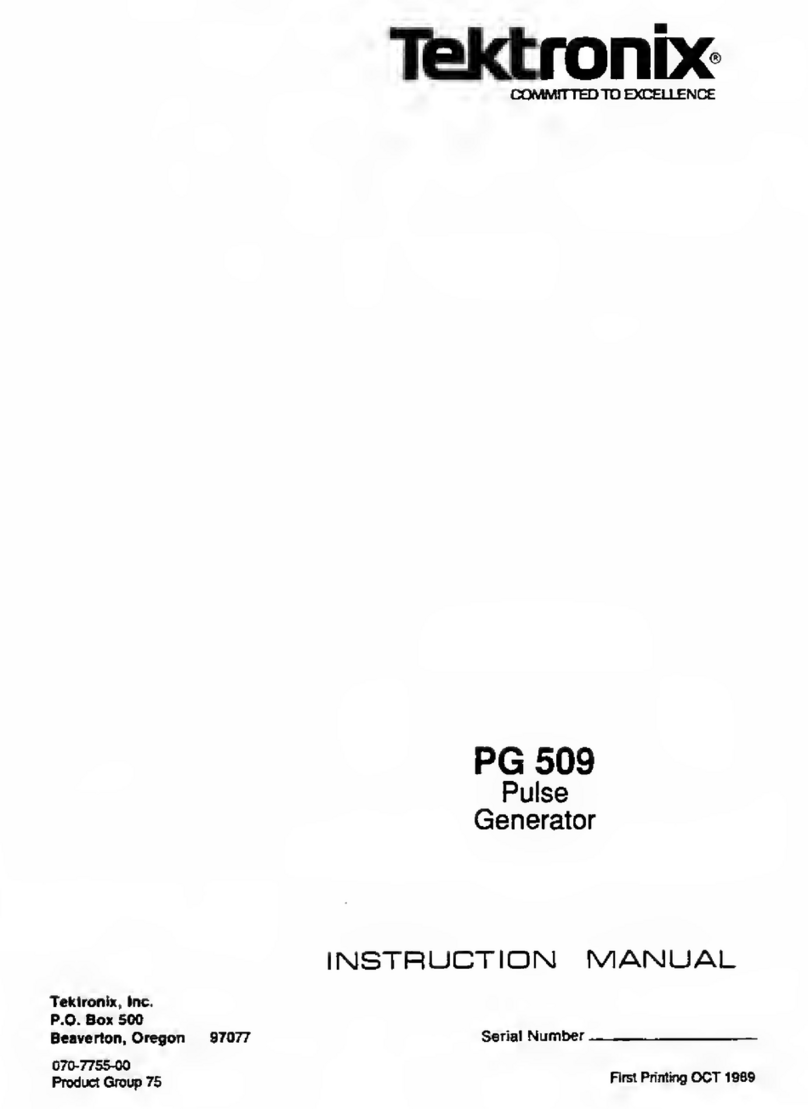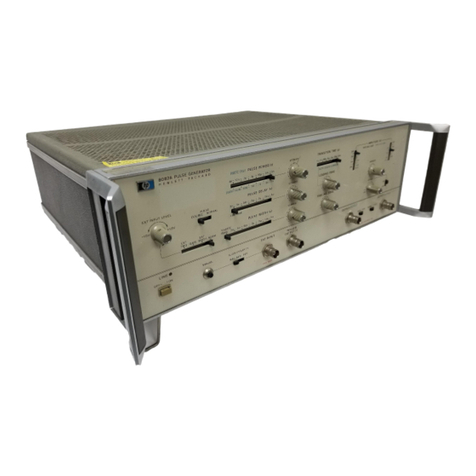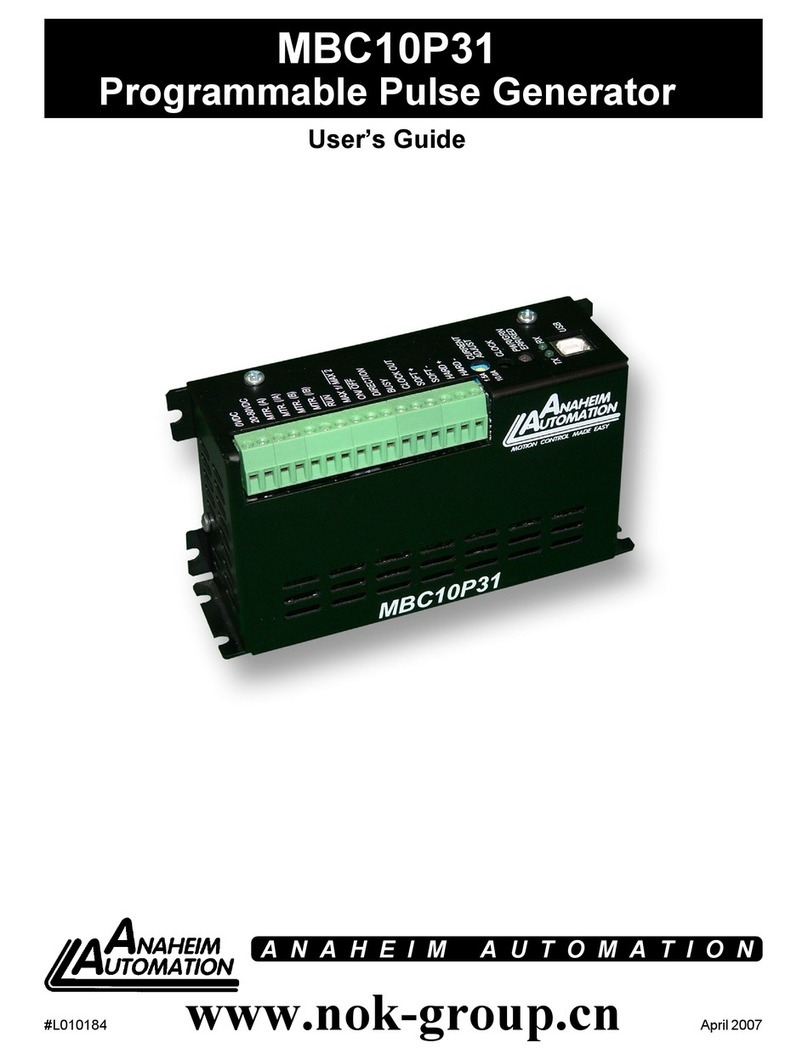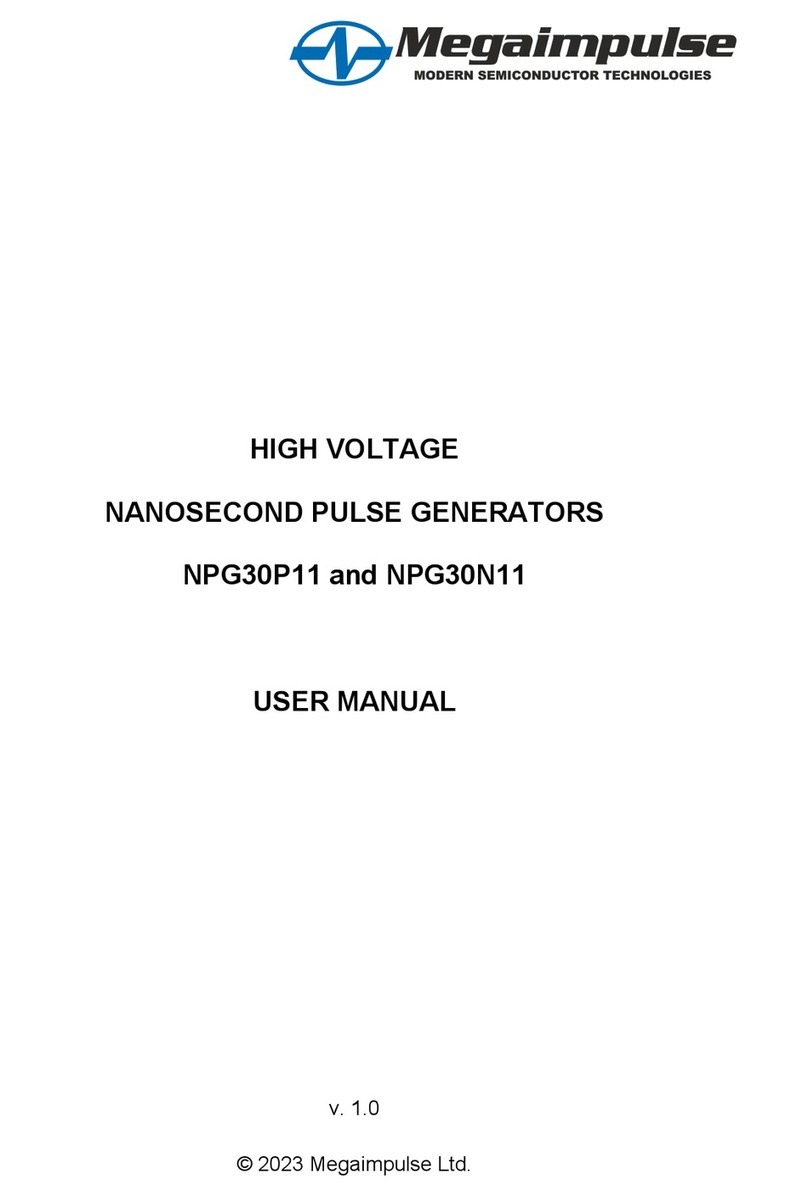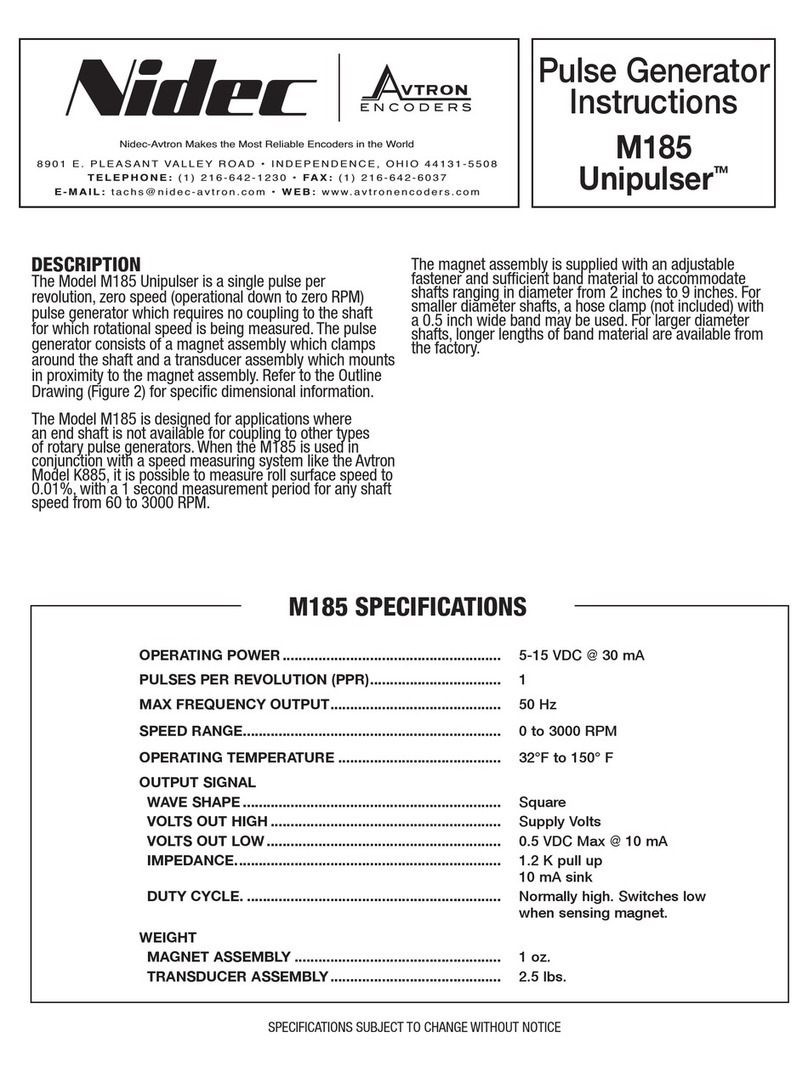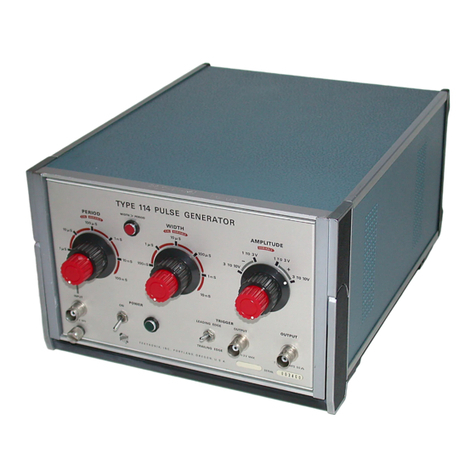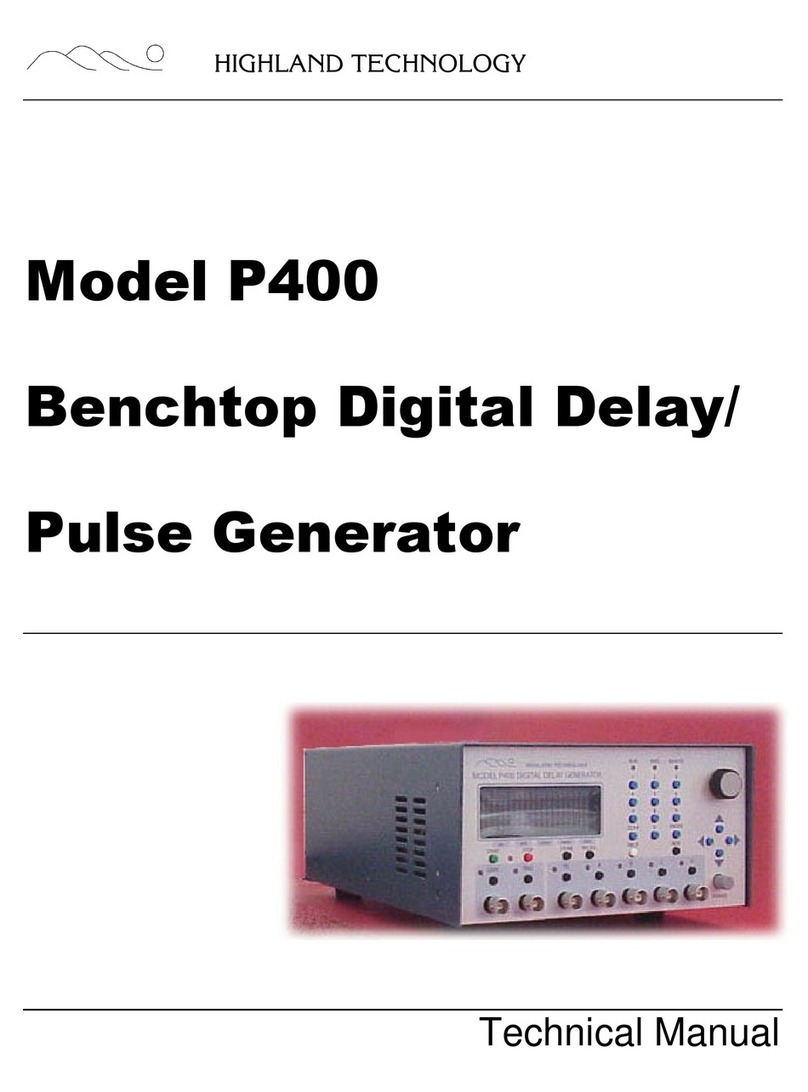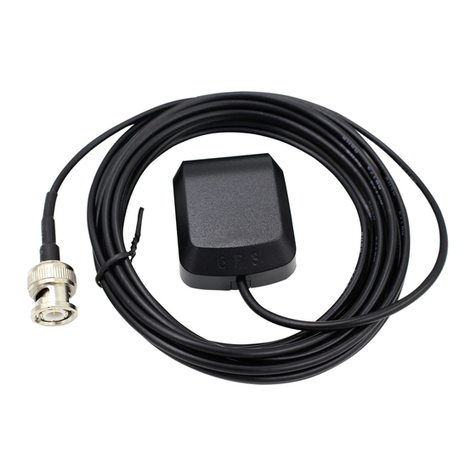SPECIFICATIONS
Model1: AVR-E1-B
Maximum amplitude2: 20V
Rise time (20%-80%): ≤ 0 3 ns
Fall time (80%-20%): ≤ 0 6 ns
Pulse width (FWHM): standard units: 10 ns to 200 ns
with -W1 option: 1 ns to 200 ns
with -W2 option: 50 ns to 5 us
with -W3 option: 1 ns to 5 us
Maximum PRF:
Standard units, or with -W1 option:
Units with -W2 or -W3 options:
200 kHz
20 kHz
Maximum duty cycle: 5%
Required load6: 50Ω (±10%)
Polarity: Positive or negative or both (specify3)
Dual polarity not available on units with -W2 or -W3 options
DC offset or bias insertion: Option available4 Apply required DC offset or bias in the range of ± 25 Volts,
(250 mA max) to back panel solder terminals
Trigger modes: Internal trigger, external trigger (TTL level pulse, > 10 ns, 1 kΩ input impedance),
front-panel “Single Pulse” pushbutton, or single pulse trigger via computer command
Variable delay (Sync to main out): 0 to 1 0 seconds, for all trigger modes (including external trigger)
Propagation delay: ≤ 160 ns (Ext trig in to pulse out)
Jitter: (Ext trig in to pulse out) ± 35ps ± 0 015% of sync delay
Sync output: > +3 Volts, > 50 ns, will drive 50 Ohm loads
Gate input: Synchronous or asynchronous, active high or low, switchable Suppresses triggering
when active
Connectors: Out: SMA, Other: BNC
Power requirements: 100 - 240 Volts, 50 - 60 Hz
GPIB and RS-232 control1: Standard on -B units
LabView drivers: Check http://www avtechpulse com/labview for availability and downloads
Ethernet port, for remote control using
VXI-11 3, ssh, telnet, & web:
Included Recommended as a modern alternative to GPIB / RS-232
See http://www avtechpulse com/options/vxi for details
Settings resolution: The resolution of the timing parameters (pulse width, delay, period) varies,
but is always better than 0 15% of (|set value| + 20 ns)
The amplitude resolution is < 0 1% of the maximum amplitude
Settings accuracy, after 10 minute warm-
up:
Amplitude: Typically ± (3% of setting) ± (2% of maximum)
Delay, Period: Typically ± (3% of setting ) ± (5 ns)
Pulse width: Typically ± (3% of setting ) ± (2 ns), at maximum amplitude As the
amplitude is reduced, the pulse width may shift ± 5 ns For high-accuracy applications
requiring traceable calibration, verify the output with a calibrated oscilloscope7
Dimensions (H x W x D): 100 mm x 430 mm x 375 mm (3 9” x 17” x 14 8”)
Chassis material: cast aluminum frame and handles, blue vinyl on aluminum cover plates
Temperature range: +5°C to +40°C
1) -B suffix indicates IEEE-488 2 GPIB and RS-232 control of amplitude, pulse width, PRF and delay (see http://www avtechpulse com/gpib)
2) For operation at amplitudes of less than 10% of full-scale, best results will
be obtained by setting the amplitude near full-scale and using external attenuators on the output
3) Indicate desired polarity by suffixing model number with -P or -N (i e positive or negative) or -PN for dual polarity option
4) The -OS option adds an internal bias tee circuit to the output, allowing an externally-generated DC offset (±25V/250mA max) to be added the output
signal The -OT option includes the -OS function, and adds the ability to generate a ±5V/100mA offset internally (controlled from the front panel, or by
computer command)
5) Fall time increases to < 3 ns for pulse widths less than 15 ns
6) A 50Ω load is required Other loads may damage the instrument Consult Avtech (info@avtechpulse com) if you need to drive other load
impedances
7) These instruments are provided with a basic calibration checksheet, showing a selection of measured output parameters These measurements are
performed with equipment that is calibrated on a regular basis by a third-party ISO/IEC 17025:2005 accredited calibration laboratory However,
Avtech itself does not claim any accreditation For applications requiring traceable performance, use a calibrated measurement system rather than
relying on the accuracy of the pulse generator settings

